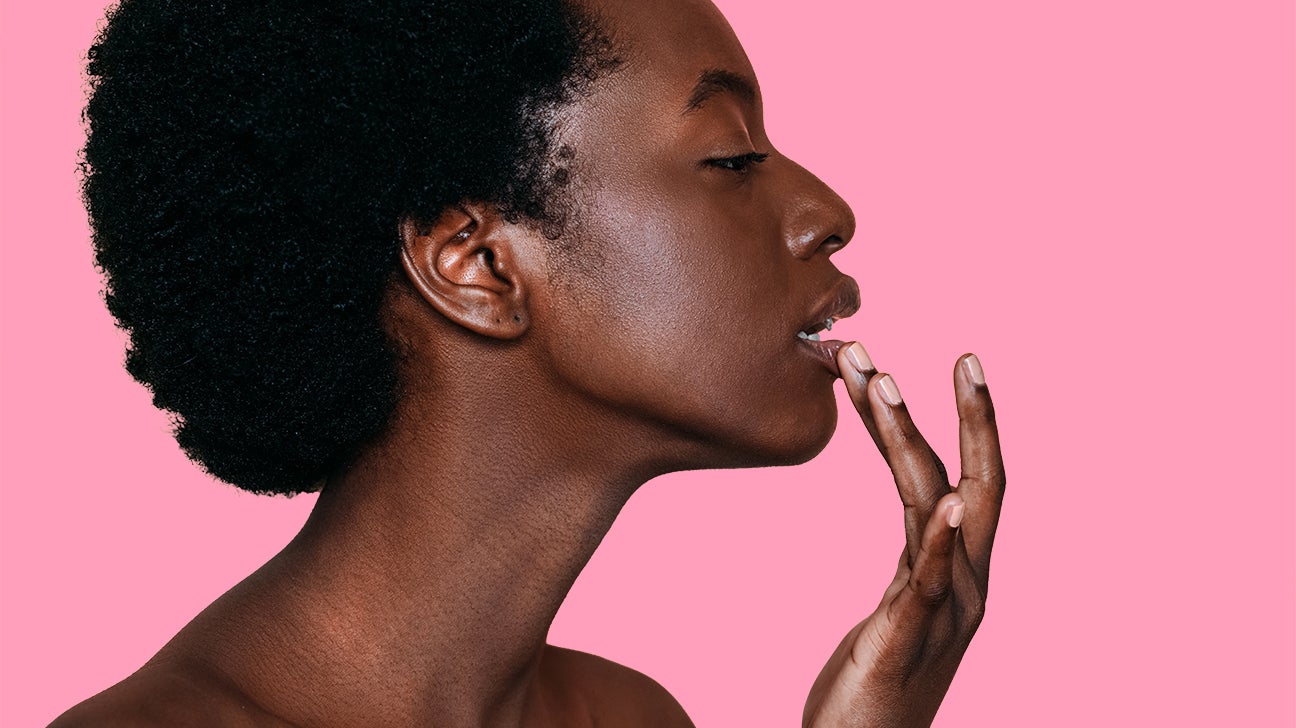You’ve likely seen lanolin oil on the ingredient list of your go-to beauty products, and for good reason. This super moisturizing oil can keep your skin happily hydrated.
What is lanolin oil anyway?
Lanolin oil is actually secreted from sheep’s skin. (Yes, baa sheep 🐑.) You know how your sebaceous glands produce sebum to lube up your hair and skin? Think of lanolin like that, but from sheep.
Because of its natural conditioning and moisturizing properties, the oil is extracted and used in a variety of human skin care products.
But what are the actual benefits of lanolin oil, and is it *really* that good?

How do we get lanolin oil?
A sheep’s skin secretes lanolin to protect and condition its wool. You may also see lanolin oil incorrectly called “wool fat,” but it actually isn’t a fat at all (the more you know 💫).
So how do humans get the stuff? After a sheep is sheared, its wool is put through a centrifuge machine to extract lanolin oils. This process separates the oil from other debris and chemicals lurking in the wool. The oil is then added to skin and hair care products, or used on its own.
What products use lanolin oil?
You can find pure lanolin oil products online and in stores. It can also be found in many of your fave products, like:
What’s good? Lanolin oil benefits
Lanolin’s main benefit: it’s moisturizing AF.
Because it’s considered an emollient, it can help soothe and smooth dry, cracked, or dehydrated skin. It’s also an occlusive moisturizer (meaning it can slow water loss from your skin). A 2017 review notes that lanolin can reduce skin’s water loss by as much as 20 to 30 percent.
With its ultra-hydrating abilities, lanolin oil can soften dry, rough, or flaky skin, and improve skin’s feel and appearance.
Lather up: How to use lanolin oil
Because lanolin oil is an emollient and occlusive moisturizer, it can be an A+ skin care ingredient.
Lanolin is often paired with a humectant ingredient, like glycerin, aloe, or honey. This is because a humectant pulls moisture directly from the air to quench your skin. Lanolin, on the other hand, can only trap existing moisture on your skin or hair.
So, what specifically is lanolin oil used for?
Smoothing face wrinkles
Many “anti-aging” products use lanolin, but is it key to minimizing fine lines and wrinkles? TBH, we don’t really know.
There isn’t much scientific evidence to back up this claim, so more research is needed before we can crown lanolin a wrinkle-fighting champ.
Lanolin *can* help keep your skin nice and plump thanks to its moisture-retaining powers. While this can’t completely eliminate fine lines and wrinkles, it may help reduce their appearance.
Promoting healthy hair
Hair feeling dry and frizzed AF? Lanolin oil may help.
Lanolin can help trap moisture in already wet or damp hair. (Remember: lanolin needs pre-existing moisture to work its wonders, so it won’t work on dry hair!)
Keep in mind that lanolin oil has a waxier feel than other hair oils, so it may be difficult to wash it out. Try using a clarifying shampoo or a bit of apple cider vinegar to make sure it’s fully removed from your hair.
Soothing dry lips
Your go-to lip balm? Lanolin oil might be in it.
Many lip care ingredients only moisturize the top layer of your lips. Lanolin penetrates deeper to deliver moisture beyond the lip barrier.
According to one 2013 study, lanolin cream was even effective for those experiencing dry lips as a result of chemotherapy treatments.
Calming cracked nipples
Breastfeeders rejoice!
Research shows that purified lanolin oil helps treat painful or damaged nipples due to breastfeeding. It helps restore moisture to the nipples, while providing soothing relief for cracked and dry nips.
Just make sure you choose your lanolin product wisely. Only select products that contain 100 percent pure and refined lanolin oil to avoid causing an allergic reaction with your bébé. You’ll also want to avoid using lanolin nipple creams or oils if your kiddo ends up having a wool allergy.
Can lanolin be bad for skin? Side effects and allergies
Lanolin oil is generally considered safe. But, there are situations where it can cause some not-so-fun side effects, and even be dangerous.
Lanolin oil allergies
It’s a rare allergy, but some folks are allergic to lanolin. Those with wool allergies should also avoid using lanolin for skin care.
According to a 2001 study, lanolin allergies affected only 1.7 percent of 25,000 allergy-prone participants.
An allergic reaction to lanolin can cause:
- a rash
- swelling of the eyes, lips, mouth, or throat
- shortness of breath
Lanolin oil poisoning
Lanolin can be dangerous even if you aren’t allergic to it. Ingesting too much of the substance can lead to lanolin oil poisoning.
If you’re lanolin lip balm obsessed, be mindful of how much you’re using. It’s fairly easy to swallow the product unknowingly, which can cause this waxy oil to build up in the intestines over time.
Seek medical attention ASAP if you or someone you know has ingested lanolin.
Lanolin poisoning symptoms include:
- rash
- skin redness or swelling
- diarrhea
- vomiting
Vegan? Here are some other fab skin oils
If you’re living the vegan life, you might not be down with lanolin since it’s an animal byproduct.
Don’t fret moisture seekers, lanolin isn’t the only oil you can add to your skin care routine. You can also try one of these great skin oil options:
Takeaway
Lanolin oil is a waxy substance secreted by sheep that’s hydrating and conditioning. These moisturizing properties make it a popular ingredient in many skin and hair care products.
If you’re allergic to lanolin or wool, steer clear of lanolin oil or products containing it. You’ll also want to avoid ingesting lanolin (be careful of lip balms and nipple products) as it can be dangerous if it builds up in the intestines.

0 Commentaires